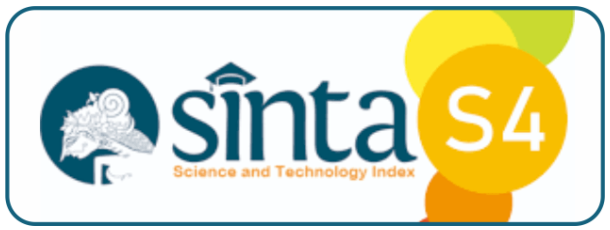QR Code-Based Information System Designed to Display Irrigation Unit Data
DOI:
https://doi.org/10.32877/bt.v7i3.2165
Keywords:
Data Management, Information System, Irrigation Unit, SDLC, QR Code
Abstract
The management and maintenance of irrigation unit data are still conducted manually, leading to inefficiencies in record-keeping, data retrieval, and asset monitoring. The absence of a structured digital system makes it difficult to track the location, specifications, history, and condition of irrigation units, which affects operational efficiency. To address this issue, a QR Code-based information system was developed to provide quick and accurate access to irrigation unit data. This system was developed using the System Development Life Cycle (SDLC) methodology with the Waterfall model, ensuring a structured and systematic approach in each development phase, including analysis, design, implementation, testing, and maintenance. Various software tools such as Sublime Text 3, XAMPP Control Panel v3.2.2, and Google Chrome were used to support system development, while QR Code scanning was integrated through mobile devices for ease of access. The system was tested using the black box method to evaluate its functionality and performance. The results showed that the system effectively displays irrigation unit information through QR Code scanning. The maximum readable QR Code size is 10 cm² with an optimal scanning distance of up to 50 cm. The system functions reliably under various lighting conditions, except when the QR Code is significantly folded or scratched, which affects readability. This research demonstrates that a QR Code-based information system can improve efficiency in irrigation unit management by providing real-time, accessible, and structured data. Future enhancements may include additional features such as location mapping and automated reporting for maintenance and issue tracking.
Downloads
References
E. A. Hidayat, “Perancangan Sistem Informasi Berbasis Qr Code Untuk Menampilkan Data Koleksi Di Taman Balekambang,” Universitas Muhammadiyah Surakarta, pp. 2–18, 2019.
E. P. Kadarisman and H. Supriyono, “Sistem Penampil Informasi Koleksi Batik Berbasis Qr Code Di Gedung Seminar Siti Walidah Muhammadiyah Surakarta,” Jurnal Ilmiah SINUS, vol. 17, no. 1, p. 37, 2019, doi: 10.30646/sinus.v17i1.394.
S. Kar, S. Bhimrajka, A. Kumar, and S. Mukherjee, Mobile based Inventory Management System with QR code. 2022. doi: 10.1109/CONECCT55679.2022.9865739.
A. Saputra, “Penerapan Qr Code Untuk Sistem Informasi Aset Barang Politeknik Negeri Bengkalis Berbasis Web,” 2021.
S. Pargaonkar, “A Comprehensive Research Analysis of Software Development Life Cycle (SDLC) Agile & Waterfall Model Advantages, Disadvantages, and Application Suitability in Software Quality Engineering,” International Journal of Scientific and Research Publications, vol. 13, pp. 120–124, Aug. 2023, doi: 10.29322/IJSRP.13.08.2023.p14015.
N. Huda and R. Amalia, “Implementasi Sistem Informasi Inventaris Barang pada PT.PLN (Persero) Palembang,” Jurnal Sisfokom (Sistem Informasi dan Komputer), vol. 9, no. 1, pp. 13–19, 2020, doi: 10.32736/sisfokom.v9i1.674.
V. Sewpersadh, N. Pillay, and H. Xu, “Streaming QR codes--A survey,” IEEE Access, 2024.
I. Das and D. Das, “QR Code And Its Effectiveness in Library Services,” May 2021.
N. Wahyudin, N. Herlissha, C. Christianingrum, and D. Aldiesi, “The Utilization of E-Commerce and QRIS as Digital Payment Tools to Improve Sales Performance through Competitive Advantage in MSME,” Journal of Consumer Sciences, vol. 7, pp. 134–147, Aug. 2022, doi: 10.29244/jcs.7.2.134-147.
M. Yanis, M. Zainal, R. Aulia Putra, and A. Paembonan, “INTEGRATION OF QR-CODE AND WEB-BASED APPLICATIONS FOR DEVELOPING DIGITAL TOURISM IN IBOIH VILLAGE, INDONESIA AS A LESSON LEARNED MEDIA ON THE VOLCANIC ISLAND,” Geojournal of Tourism and Geosites, vol. 47, pp. 499–507, Jun. 2023, doi: 10.30892/gtg.47217-1049.
A. D. Astiti, R. C. Murti, and M. Hakiki, “Development of web-based digital libraries as learning resource facilities in elementary schools,” Jurnal Kajian Informasi & Perpustakaan, vol. 11, no. 1, p. 147, 2023, doi: 10.24198/jkip.v11i1.42192.
G. T. Rosadi and Universitas, “Sistem Informasi Penilaian Kinerja Karyawan Pada Yayasan Kasih Suwitno Berbasis Web,” SATIN – Sains dan Teknologi Informasi, vol. 5, no. 2, 2019.
Y. Handrianto and B. Sanjaya, “Model Waterfall Dalam Rancang Bangun Sistem Informasi Pemesanan Produk Dan Outlet Berbasis Web,” Jurnal Inovasi Informatika, vol. 5, pp. 153–160, Sep. 2020, doi: 10.51170/jii.v5i2.66.
M. Ogunbukola, “Agile vs. Waterfall Methodologies in Public Sector Projects: A Comparative Analysis,” Oct. 2024.
S. Arpula, B. Gouthami, B. Bixapathi Nayak, and K. Shirisha, “Smart Irrigation Systems in Agriculture,” 2024, pp. 11–26.
X. Zhu, S. Mukhopadhyay, and H. Kurata, “A review of RFID technology and its managerial applications in different industries,” Journal of Engineering and Technology Management - J ENG TECHNOL MANAGE, vol. 29, Jan. 2011, doi: 10.1016/j.jengtecman.2011.09.011.
S. Wahidi, T. Pribadi, and M. Rahman, “Study of QR Code Technology Application for Monitoring Activity of Ship Planned Maintenance System,” Kapal Jurnal Ilmu Pengetahuan dan Teknologi Kelautan, vol. 19, pp. 64–76, Jun. 2022, doi: 10.14710/kapal.v19i2.45507.
Benrahman, “Asset Management Information and Tracking System With QR Code Based on the Human Centred Design Method,” Journal of Physics: Conference Series, vol. 1830, p. 12006, Apr. 2021, doi: 10.1088/1742-6596/1830/1/012006.
S. Rajest, R. Rajan, S. R, and S. T, “A QR Code-Based Real-Time Auditing System for Safe Online Data Storage,” vol. 6, pp. 10–28, Jan. 2024.
L. Tarjan, I. Senk, S. Tegeltija, S. Stankovski, and G. Ostojic, “A readability analysis for QR code application in a traceability system,” Computers and Electronics in Agriculture, vol. 109, pp. 1–11, Nov. 2014, doi: 10.1016/j.compag.2014.08.015.
S. M. Khan, Waterfall Model Used in Software Development Reference: Software Requirements Engineering Waterfall Model. 2023. doi: 10.13140/RG.2.2.29580.69764.
Downloads
Published
How to Cite
Issue
Section
License
Copyright (c) 2025 bit-Tech

This work is licensed under a Creative Commons Attribution-ShareAlike 4.0 International License.
I hereby assign and transfer to bit-Tech all exclusive copyright ownership rights to the above work. This includes, but is not limited to, the right to publish, republish, downgrade, distribute, transmit, sell, or use the work and other related materials worldwide, in whole, or in part, in all languages, in electronic, printed, or any other form of media, now known or hereafter developed and reserves the right to permit or license a third party to do any of the above. I understand that this exclusive right will belong to bit-Tech from the date the article is accepted for publication. I also understand that bit-Tech, as the copyright owner, has sole authority to license and permit reproduction of the article. I understand that, except for copyright, any other proprietary rights associated with the work (e.g. patents or other rights to any process or procedure) must be retained by the author. In addition, I understand that bit-Tech permits authors to use their papers in any way permitted by the applied Creative Commons license.


 DOI :
DOI :
 Abstract views: 38
/
Abstract views: 38
/  PDF downloads: 15
PDF downloads: 15











